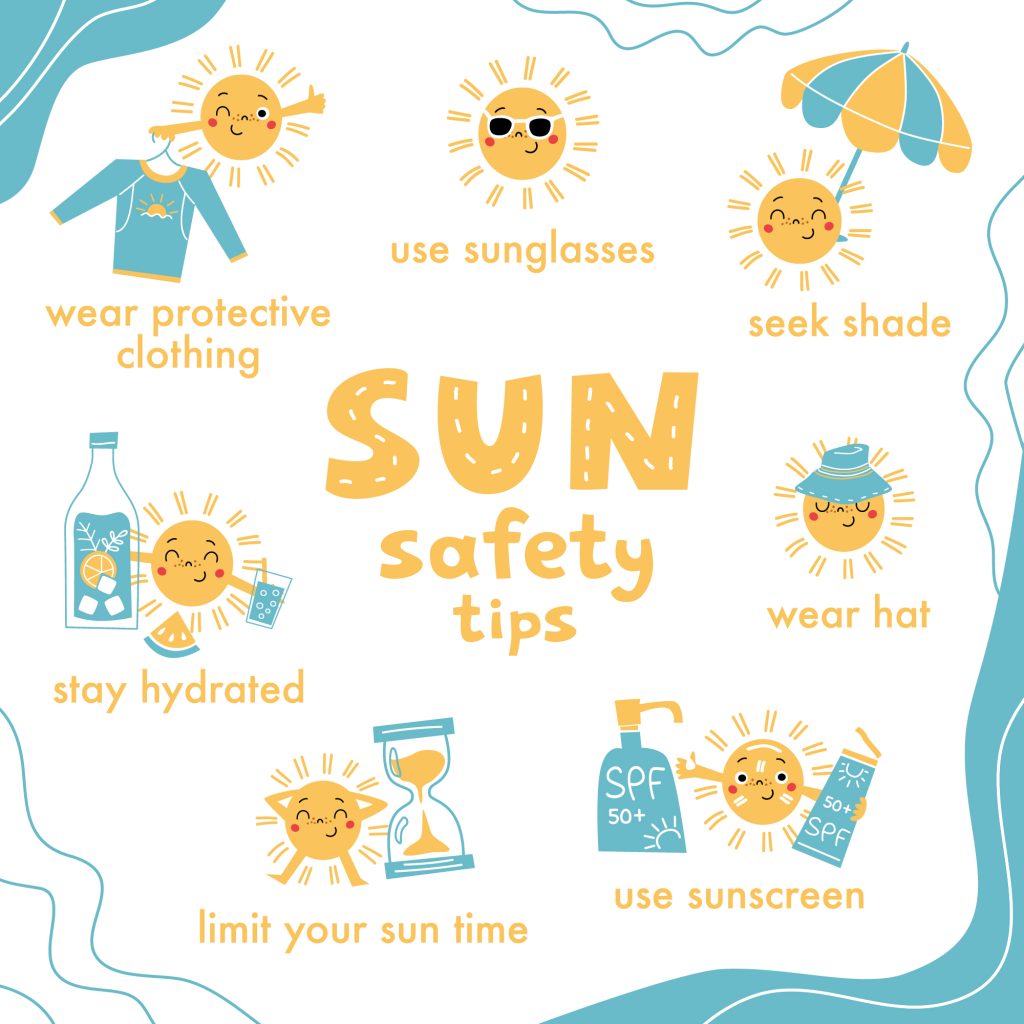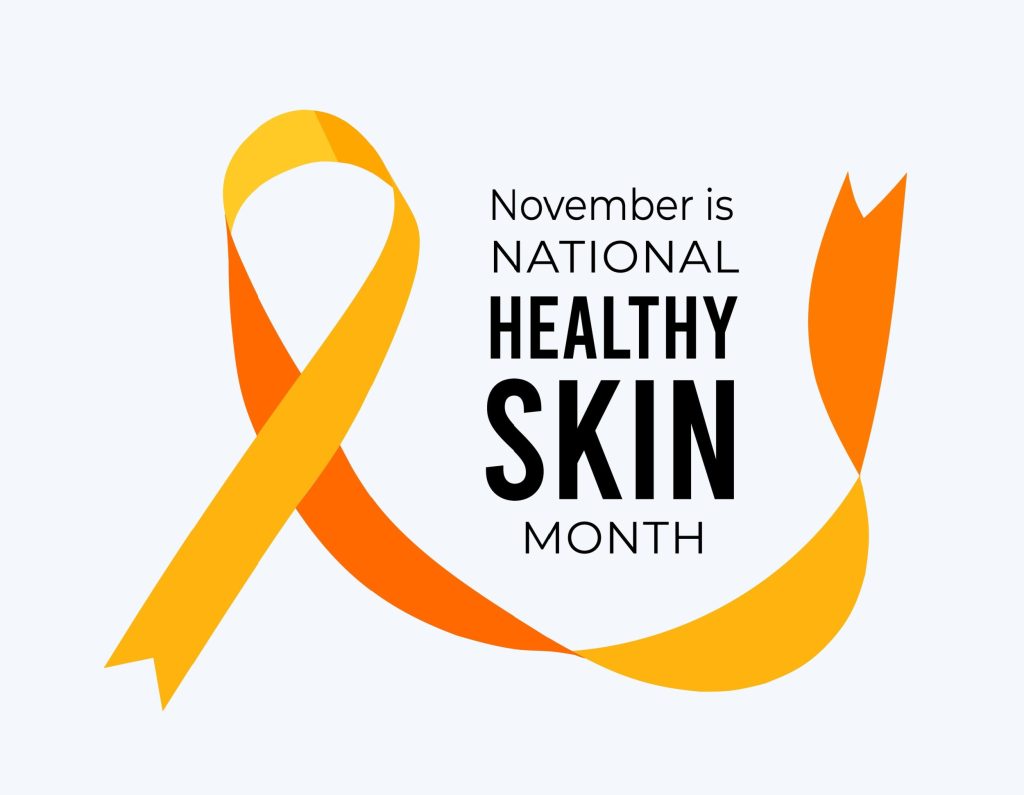
Florida’s summer temperatures are soaring, with sweltering heat becoming a daily reality. Despite the intense sun, Floridians and visitors alike are eager to enjoy outdoor summer activities and adventures. And with any fun in the Florida sun, your chances of prolonged ultraviolet (UV) radiation exposure are high during this time of year. It’s important to remember that effective sun protection is crucial to keeping your skin safe and healthy while you are spending time outside.
Ultraviolet A (UVA) and ultraviolet B (UVB) rays both play a part in damaging DNA cells within the skin and can cause skin cancer. The best way to combat this is by practicing sun safety in a responsible way. According to the Skin Cancer Foundation, wearing UPF clothing is the most effective form of sun protection. Ultraviolet Protection Factor (UPF) can be found in shirts, hats, pants, sunglasses, and even umbrellas, window film, and glass. It protects against both UVA and UVB rays when worn properly. The Skin Cancer Foundation recommends the fabric meets a minimum of 30 UPF through their Seal of Recommendation for safe and effective sun protection. A UPF of 50+ rates as excellent.
Experts advise that you “stack” your sun protection by first applying at least one ounce of broad-spectrum, water-resistant sunscreen all over your body 30 minutes prior to going outside and reapply at least every two hours to all exposed skin or immediately after swimming or sweating. Next, follow up with dressing in a long-sleeved, lightweight shirt and long pants with built-in UPF protection. Don’t forget a wide-brimmed hat and sunglasses. Layering sunscreen and protective clothing will greatly decrease your chances of exposure to harmful UV rays. Additionally, if you can, seek shade especially during the hours of 10 a.m. and 4 p.m.
UPF clothing should be worn as often as possible when spending any length of time outdoors. When looking for the right clothing, there are a few things to keep in mind.
Florida Dermatology and Skin Cancer Centers (FLDSCC) follows the Skin Cancer Foundation’s recommendations on the following for sun protective clothing:
- Color – Darker and brighter colors typically absorb sunlight better than lighter ones because they do not allow as many UV rays to penetrate through the fabric.
- Durability – The denser a fabric is, the more sun protection it will offer. Take denim for example and compare it to a sheer, see-through fabric like chiffon; the denim is more tightly knitted and will offer better coverage than the chiffon.
- Fabric composition – The structure of a fabric also has a lot to do with the protection it will provide. Surprisingly, a material like unbleached cotton can act as a natural UV absorber. Shiny materials that have been pre-treated, like polyester with a sheen to it, can also reflect the sun’s rays.
- How it fits & what it covers – It is suggested that you wear loosely-fitted long-sleeved shirts and long pants. Choose clothing that moves with you. Try to anticipate how what you are wearing will work as you engage in outdoor activities, especially if you will be getting wet or moving around a lot. When certain fabrics get wet, they lose their ability to provide proper sun protection. Additionally, if what you are wearing is tight, sunlight is more likely to pass through fibers as the clothing stretches to fit.
- The UPF factor – Look for clothing that has been labeled as UPF by manufacturers. As stated prior, The Skin Cancer Foundation recommends the fabric meets a minimum of 30 UPF through their Seal of Recommendation for safe and effective sun protection. If a clothing brand has not signified whether or not the item has a UPF, it is better to err on the side of caution and choose something that has been clearly marked.
An important step to include as you practice sun safety is to pay special attention and apply sunscreen frequently to areas that may not be protected by clothing. Examples include hands, face, neck, ears, and feet (especially if wearing sandals).
Besides being sun smart on a daily basis, FLDSCC recommends that you regularly perform a self-exam by checking yourself in the mirror and looking for any new, unusual, or changing areas, and reporting those to your dermatologist right away. An annual skin exam can also help identify suspicious growths, moles, and other dermatologic changes.
However you decide to celebrate the summer in Florida, let us know how we can help you stay sun safe!
Contact FLDSCC for All Your Skin Care Needs
Florida Dermatology and Skin Cancer Centers provides a full spectrum of dermatology and skin care services, and its team of physicians, APRNs, and PAs are experts in diagnosing and treating skin cancers with the latest technological options. Medical Director, Dr. K. Wade Foster, is fellowship-trained in Mohs surgery, the most effective technique for most types of skin cancers, with minimal scarring or risk.
For more information about services that Florida Dermatology and Skin Cancer Centers provides, or to make an appointment for a skin exam, visit www.fldscc.com or contact us at (855) FLD-SKIN.


